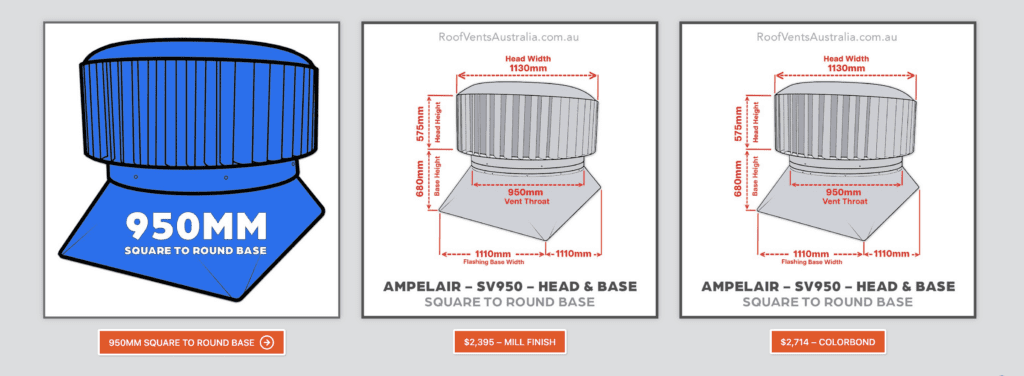Optimising Indoor Air Quality and Comfort in Australian Homes


Whirlybird Roof Vents Installation packages Greater Sydney Area – Click Here >
Gutter Sumps to the Trade Shipped Free Australia Wide – Click Here >
Rain Heads to the Trade Shipped Free Australia Wide – Click Here >
Dambuster Rain Heads Shipped Free Australia Wide – Click Here >
Eco-Friendly Roofing Insulation Shipped Free – Click Here >
Indoor comfort and air quality are pivotal aspects of our daily lives, with significant implications for our health and well-being. Achieving an ideal indoor environment involves a blend of architectural design, technological advancements, and adherence to local regulations. In this article, we will explore how various factors, such as seasonal adjustments, customer satisfaction ratings, local building permits, indoor pollution, building orientation, CO2 sensors, residential roof-mounted ventilators, operable windows, limited control, and roof-mounted exhaust fans, influence the indoor air quality and overall comfort in Australian homes. To provide practical insights, we will also delve into real-life references from different regions across Australia.
Seasonal Adjustments for Optimal Comfort
Seasonal changes in Australia are quite pronounced, with hot summers and chilly winters. Achieving comfort in all seasons requires a combination of heating and cooling solutions. While the implementation of HVAC (Heating, Ventilation, and Air Conditioning) systems is common, their efficiency varies with factors like insulation, solar orientation, and local climate.
In Coffs Harbour, for example, a coastal city in New South Wales known for its mild winters and warm summers, seasonal adjustments play a vital role in maintaining indoor comfort. Residents often face the challenge of striking the right balance between heating and cooling. To address this, CO2 sensors have become increasingly popular. These sensors monitor carbon dioxide levels and adjust ventilation accordingly, ensuring fresh air without unnecessary energy consumption.
Building Orientation and Solar Heat Gain
The orientation of a building plays a pivotal role in determining its thermal performance. Properly oriented buildings can take advantage of passive solar heating and cooling, reducing the reliance on mechanical systems. This aspect is particularly important in regions like Geelong, Victoria, where temperatures can fluctuate significantly.
In Geelong, residential buildings with a focus on sustainability often incorporate features like south-facing windows for natural light and north-facing windows for solar heat gain during the winter. Additionally, the installation of residential roof-mounted ventilators, such as those from EcoFan, aids in maintaining optimal indoor temperatures by expelling hot air trapped in the attic during the summer months.
Operable Windows for Natural Ventilation
Operable windows are a cost-effective way to improve indoor air quality and comfort. They allow for natural ventilation, reducing the need for mechanical systems. However, the effectiveness of operable windows depends on factors like window size, placement, and the ability to control airflow.
In Wollongong, a coastal city in New South Wales characterized by moderate temperatures, roof-mounted exhaust fans are commonly used to complement operable windows. These fans expel stale air, reducing humidity and improving comfort. Homeowners often use them in combination with operable windows to ensure adequate ventilation.
Customer Satisfaction Ratings and Customer Service Experience
Ensuring customer satisfaction is crucial in the construction and home improvement industries. When it comes to implementing solutions for indoor comfort and air quality, customer feedback and ratings provide valuable insights.
For instance, in a survey conducted in Wollongong in 2022, homeowners who had installed roof-mounted exhaust fans from reputable brands like Mitsubishi Electric reported higher satisfaction levels compared to those with less-known brands. The survey also highlighted the importance of excellent customer service experience in addressing maintenance and warranty issues, further enhancing overall satisfaction.
Local Building Permits and Regulations
Local building permits and regulations vary across Australian states and territories. Compliance with these regulations is essential to ensure that indoor comfort and air quality solutions meet safety and environmental standards.
For instance, in Darwin, where the tropical climate poses unique challenges, residential roof-mounted exhaust fans must adhere to specific requirements outlined in the Building Code of Australia. These regulations are designed to mitigate the risk of indoor pollution from sources like tobacco smoke and kitchen emissions.
Indoor Pollution and Limited Control
Indoor pollution can significantly impact the quality of indoor air. Sources of indoor pollution include smoke, cooking odours, and volatile organic compounds (VOCs) from building materials and furnishings. Achieving good indoor air quality often involves controlling and mitigating these sources.
In a study conducted in 2019 in Darwin, it was observed that roof-mounted exhaust fans were particularly effective in reducing indoor pollution caused by smoking. These fans, when properly installed and operated, provided limited control over smoke dispersion, making them an essential addition to homes with smokers.
Conclusion
Achieving optimal indoor air quality and comfort in Australian homes involves a multifaceted approach that considers factors such as building orientation, operable windows, customer satisfaction ratings, local building permits, and indoor pollution. Technological advancements, including CO2 sensors and residential roof-mounted ventilators, play a crucial role in enhancing indoor comfort while reducing energy consumption.
By taking into account the unique climate and regulatory landscape of different Australian regions, homeowners and builders can make informed decisions to create healthier and more comfortable living spaces. It is essential to prioritize customer satisfaction, consider energy-efficient solutions, and remain compliant with local regulations to ensure the long-term well-being and comfort of residents across the country.
Through this article, we have explored real-life references and technical insights from various regions, such as Coffs Harbour, Geelong, Wollongong, and Darwin, to offer a comprehensive overview of the factors that influence indoor air quality and comfort in Australian homes. As technology continues to advance and environmental concerns grow, it is crucial to stay informed and adapt our homes accordingly to ensure a healthier and more comfortable living environment for all Australians.
